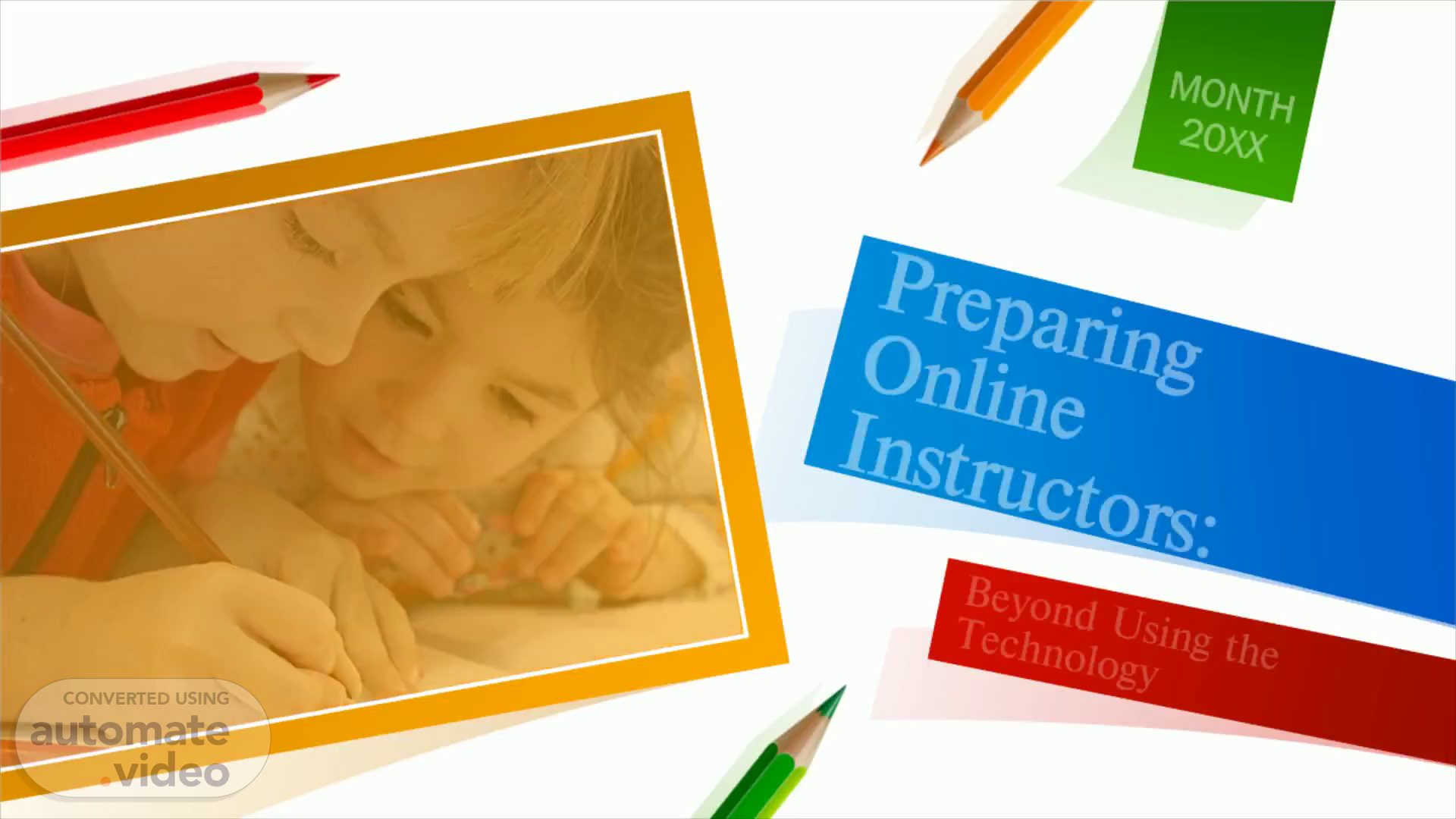
Preparing Online Instructors:
Scene 1 (0s)
Preparing Online Instructors:. Beyond Using the Technology.
Scene 2 (9s)
ADDIE MODLE. Child Holding Pencil While coloring.
Scene 3 (16s)
3. ADDIE MODLE. Based on the ADDIE model, evaluation is the core.
Scene 4 (37s)
4. DOES IT WORK?. Different types of evaluations we can use.
Scene 5 (55s)
5. Painting and Drawing Tools Set. Helps instructors to provide students with ongoing feedback and monitor their continuous learning.
Scene 6 (1m 5s)
FORMATIVE EVALUATION. 6. Use pre-assessment formative activities before beginning a unit. Assess where your class is as a whole. Use pre-assessment formative activities to discover students who might need instruction outside the time in the regular classroom. Find time to meet with these students before starting a new unit. Use the formative assessment activities to help form your lesson plans. Do not spend time teaching what your students already know Use formative assessment to gather information about your students. Find out how much your students remember from a previous year or even a previous unit to help you plan your lessons..
Scene 7 (1m 33s)
7. This will evaluate students’ learning at the end of each instructed unit to compare the outcome of the assessment against some standards. The program designer or the evaluator can set those standards..
Scene 8 (1m 46s)
8. It is an approach to measure quality improvement. By integrating this evaluation. Students take reviews even after the instructors executed the instruction. This approach will determine whether the instruction is a success after a while or if there is a gap for improvement. (Dutta, B. A. (n.d.)).
Scene 9 (2m 9s)
9. Peer evaluation is an online collaborative activity in which the instructor asks several students to present their work to another set of students to give feedback. In this evaluation, students will reflect on each other's work by creating a discussion-based atmosphere to elaborate and explain any comments made. This kind of activity is called asymmetrical, as two sets of students will produce two sets of different outputs. Peer evaluation can be handled online using computer-supported collaboration. We can use many online tools and applications, such as chat boxes, vlogs, etc., to facilitate peer evaluation and exchange ideas, knowledge, and experience. I will introduce some of the tools that offer such functionalities at the end of this chapter..
Scene 10 (2m 42s)
FORMATIVE EVALUATION. 10. Creating a learners to learners interactions widely depends on the teachers' experience, and the tools teachers use during the class as there are students with different levels of abilities. There are students that show higher performance in class and some that show weaker performance which will keep them silent during the class or it will be a pushback for them. For this reason, learning through gaming in a homogeneous class will be important for our class setting. In a homogeneous class setting students with similar abilities will be placed in the same group, this will create opportunities for the weaker student to perform better during the class..
Scene 11 (3m 10s)
11. The other tool that instructors can use to assess the environment of online classes and ensure that the learners-learners interaction is happening. An environmental assessment evaluates the success of a specific learner in a particular educational environment by examining the learning demands of that setting and comparing them to the target student's strengths and challenges. (CCSN, 2018)..
Scene 12 (3m 35s)
ECOLOGICAL EVALUATION. 12. Evaluators need to guide learners by asking guiding questions, a rating scale, and a comment section in their evaluation form when measuring performance, products, and attitudes. questions about Technology, Program Structure, Course Structure, Learner Characteristics, Content, and Instructor Feedback. Are goals aligned with the requirements of the program? Are our unit plans, materials, media, and assessments aligned with the learning needs of the instructional program? Do we need to improve the effectiveness and overall satisfaction with the program's instruction? Does the designed course implementation provide effective instruction and carry out the intended lesson plan and objectives? Is the learning happening? (Learning refers to relatively permanent changes in knowledge or behavior. While performance, on the other hand, refers to temporary fluctuations in knowledge or behavior. (Bjork, R. A. 1994)). Are our learners able to transfer their learning to the target environment? Are learners engaging in the process of learning?.
Scene 13 (4m 16s)
13. Evaluators need to guide learners by asking guiding questions, a rating scale, and a comment section in their evaluation form when measuring performance, products, and attitudes. questions about Technology, Program Structure, Course Structure, Learner Characteristics, Content, and Instructor Feedback. Are goals aligned with the requirements of the program? Are our unit plans, materials, media, and assessments aligned with the learning needs of the instructional program? Do we need to improve the effectiveness and overall satisfaction with the program's instruction? Does the designed course implementation provide effective instruction and carry out the intended lesson plan and objectives? Is the learning happening? (Learning refers to relatively permanent changes in knowledge or behavior. While performance, on the other hand, refers to temporary fluctuations in knowledge or behavior. (Bjork, R. A. 1994)). Are our learners able to transfer their learning to the target environment? Are learners engaging in the process of learning?.
Scene 14 (4m 55s)
14. Assessment tools that encourages learners-learners interaction.
Scene 15 (5m 3s)
15. Quezlit. Tools that we can use for facilitating formative evaluation when running our evaluations:.
Scene 16 (6m 3s)
16. EDpuzzple. Tools that we can use for facilitating formative evaluation when running our evaluations:.
Scene 17 (8m 51s)
17. Edulastic. Tools that we can use for facilitating formative evaluation when running our evaluations:.
Scene 18 (13m 51s)
18. Flipgrid. Tools that we can use for facilitating formative evaluation when running our evaluations:.
Scene 19 (15m 26s)
Thank You!. Boy Carrying Red Backpack. Shahab Maboud.